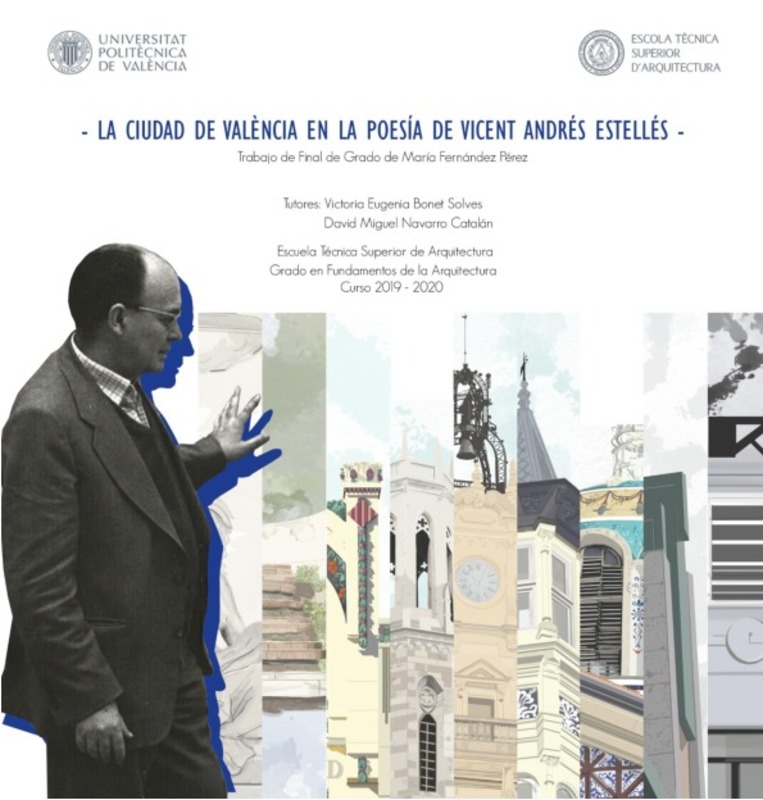|
Resumen:
|
[ES] En el siglo XIX, con el surgimiento del nuevo París de Haussmann, se consolida el término flâneur. Se utiliza para designar al nuevo paseante de la ciudad, aquel que cobra una identidad propia, el moderno espectador ...[+]
[ES] En el siglo XIX, con el surgimiento del nuevo París de Haussmann, se consolida el término flâneur. Se utiliza para designar al nuevo paseante de la ciudad, aquel que cobra una identidad propia, el moderno espectador urbano que habita las calles y evoca una manera de relacionarse con una percepción diferente del tiempo y del espacio que no se había considerado hasta el momento. Este nuevo gusto por transitar las calles y disfrutar de la experiencia, ha perdurado y evolucionado con los años. Tanto es así que en la poesía de Vicent Andrés Estellés (4 de septiembre de 1924 - 27 de marzo de 1993), podemos ver reflejada la figura del flâneur en el propio poeta. Es considerado uno de los principales renovadores de la poesía contemporánea en catalán. Su obra se centra primordialmente en Valencia: su gente, sus costumbres, sus calles y sus cines. Entre estos lugares que nombra, se ha realizado una amplia selección: el Paseo de la Alameda, la Calle Ruzafa, la calle Xàtiva o el Mercado Central. La cuestión fundamental de este trabajo de investigación versará en estudiar dichos pasajes emblemáticos de la ciudad de Valencia. De este modo, se recrearán en la actualidad los paseos que realizó el autor con su poesía en los años 70, durante la época franquista en España, y así estudiar cómo han cambiado tanto a nivel arquitectónico como a nivel de ambiente social.
[-]
[EN] In the 19th century, emergence the new Haussmann s Paris, the term flâneur was consolidated. It is used to name the new walker of the city, who takes on an own identity, the modern urban spectator that dwell and invoke ...[+]
[EN] In the 19th century, emergence the new Haussmann s Paris, the term flâneur was consolidated. It is used to name the new walker of the city, who takes on an own identity, the modern urban spectator that dwell and invoke a way of relating to a different perception of time and space that had not been considered so far. The new pleasure for walking the streets and enjoying the experience has endured and evolved over the years. So much so that in the poetry of Vicent Andrés Estellés (September 4th, 1924 March 27th, 1993), it is possible to match the concept of flâneur with the poet. He is considered one of the main renovators of contemporary poetry in Catalan. His works focuses primarily on Valencia: its people, its traditions, its streets and its cinemas. Among these places named, a wide selection has been made: The Alameda s walk, the Ruzafa Street, the Xàtiva Street or the Central Market. The fundamental question of this research work is to study these emblematic passages of the city of Valencia. In this way, the walks that the author made with his poetry in the 70 s, during the Franco regime in Spain, is recreated today, and thus study how they have changed both at the architectural level and the level of social environment.
[-]
|







